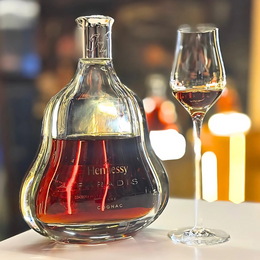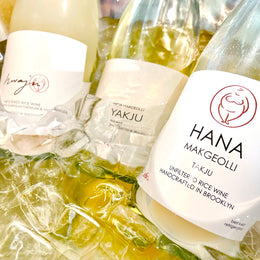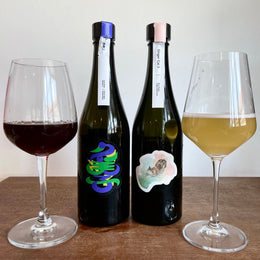
After achieving such tremendous success in bar management, it was only a matter of time before mixologist extraordinaire Shingo Gokan succumbed to the "spirit itch," a familiar urge among bartenders to delve into bottling their own spirits.
To describe him as a bartender would be incomplete, almost like describing Roger Federer as a tennis enthusiast. The Japanese bar owner is at the moment undoubtedly one of the most influential cocktail bar owners in the world at the moment.


The guy has a Wikipedia page. But to add colour to the scale of his renown, SG recently shared the limelight with Roger Federer in a Uniqlo ad campaign, entertaining Federer with a Kokuto cocktail. Yes, the 20-Grand Slam-winning Roger Federer.
SG’s renown is built on his working his way up from barback to carve out an impressive cocktail bar empire. He now owns not just 1, but 8 bars or dining venues – 3 of which frequently feature on the World’s 50 Best Bars list. His first two award-winning establishments were opened in Shanghai - Sober Company and Speak Low that offer exceptional service and inventive mixology. His most celebrated venue is The SG Club from Tokyo, a tribute to his Japanese roots, and a must-visit destination for any cocktail lover.
At the height of his success in bar management, SG recently began launching the 3-variant SG Shochu in collaboration with the top shochu distillers in Japan: Sanwa Shurui for the Mugi shochu (Japanese barley), Satsuma Shuzo for the Imo shochu (sweet potato), and Takahashi Shuzo for the Kome shochu (rice).

All these are traditional "honkaku shochu," meaning they undergo a single distillation, a rarity that I, as a whisky enthusiast, can appreciate. Single-distillation creates a “less pure” alcohol, allowing more flavours from the source ingredients to shine through unobscured.
The raison d'etre for these shochus is quite telling, especially when launched Japanese bartender. Most honkaku shochus have a low alcohol by volume (ABV) for cocktail creation, typically around 20-30%. This makes it harder for bartenders to work with the Japanese spirit, thus relegating it to a narrower range of afficionados and Japanese grandfathers. Despite being single-distilled, The SG Shochus come in at an amped-up 38% ABV, solving the issue and providing bartenders with a more potent spirit to work with.
Lucky for us spirit geeks, The SG Club team gave us the opportunity to taste all three variants of SG Shochu neat when they visited Atlas Bar in Singapore last week to attend a Spirited Awards celebration (also known as the Oscar Awards for Cocktail Bars).
The SG Shochu Imo (Sweet Potato) – 38% ABV

I elected to start with the imo shochu, made from Japanese sweet potatoes. This is the OG traditional style of shochu, and usually the most complex-tasting type.
Nose: The aroma was clean and potent, bringing to mind sweet brown sugar, a hint of vegetation, and the scent of fermented, caramelised baked sweet potato. There was also a trace of grassiness and a very slight sulphur note reminiscent of eggs.
On the palate: it presented a punchy spiciness accompanied by light notes of red fruits. It was grassy and vegetal, with a light vegetal bitterness mid-taste.
The finish: was gently warming, lasting, and filled with notes of dill herbs and spice.

My thoughts
🥋
This is complex and powerfully expressive, like an amped-up version of Satsuma Shiranami shochu. Amplified notes reflect the roasty sweet potato character and a luscious, herbaceous sweetness. Even savoured on its own, the complexity was thoroughly enjoyable.
The SG Shochu Kome (Rice) – 40% ABV

Next, I tried the kome shochu, made from rice.
Nose: The aroma was clean, bright, and crisp, bearing a resemblance to rice sake or "bready" Prosecco wines. I detected notes of green grapes and melon, along with an effervescent tartness.
The palate: was clean, bright, and syrupy, reminding me of a light sake with subtle pear notes.
The finish: was short, sweet, and lightly yeasty.

My thoughts
🥂
Sweet, straightforward and doesn't demand a lot from the drinker. Like a Marvel Cinematic Universe movie or perhaps an Australian bubbly fit for social gatherings.
As expected, this tasted and smelled like a distilled sake. This isn’t very complex, but is quite accessible. Tasted neat, this seems to me like the most straightforward and accessible line from the SG Shochu range.
With it’s high level of sweetness, I’m certain this would make a pleasing highball that balances out the syrupy notes with a light spritz.
The SG Shochu – Mugi (Barley) – 40% ABV

Finally, I sampled the mugi shochu, made with Japanese barley. Unlike the previous two which were colourless, this one had a light straw colour, indicating some time spent ageing in an oak cask.
Nose: The aroma was bright and lively, reminiscent of an unpeated Scotch whisky with a touch of vanilla, magnolias, Irish whiskey spice, cinnamon, and menthol.
On the palate: it had the brightness of an unpeated Caol Ila, with light maltiness and vanilla notes, and a considerable spiciness that developed into a slight bitterness of dark chocolate.
The finish: was moderately long, with hints of a toasty, bready character and light mineral notes.

My thoughts
🍻✅ 🥃❌
This is probably great mixed into a highball, but slightly disappointing when drunk neat by a single malt lover.
This barley spirit is layered and complex for a mugi shochu, though at such a high ABV and a modest degree of oak-aging, the level of heat and pepperiness made me question whether drinking it neat was the right approach. This is, after all, created for mixology!
Perhaps my palate is too accustomed to Scotch or Japanese whisky, and I expect a heavier touch of oak or vanilla. Nonetheless, this shochu's layered complexity would also make for a superb and nuanced highball.
Overall thoughts
Overall, each the above 3 shochus have very distinct flavour profiles and complexities. Tasted neat, my preference lies with the 38% ABV Imo shochu for its complexity and nostalgic aroma of caramelised Japanese sweet potato. But I’ll be the first to admit that this is a highly subjective verdict. Some others who were with me seemed to prefer the Kome shochu for hits sweetness and sake-like character. It’s different strokes for different folks.
I find the Mugi moderately enjoyable, but at a higher ABV and very slight oak aging, I really couldn’t shake off the (unfair) mental comparison with single malt that had been aged for a longer period of time. And because the Japanese have many ways of drinking spirits – whether as a highball (soda water), mizuwari (with water) or oyuwari (hot water), I might have to revisit this spirit with some soda water to have a clearer opinion about it.

@CharsiuCharlie







